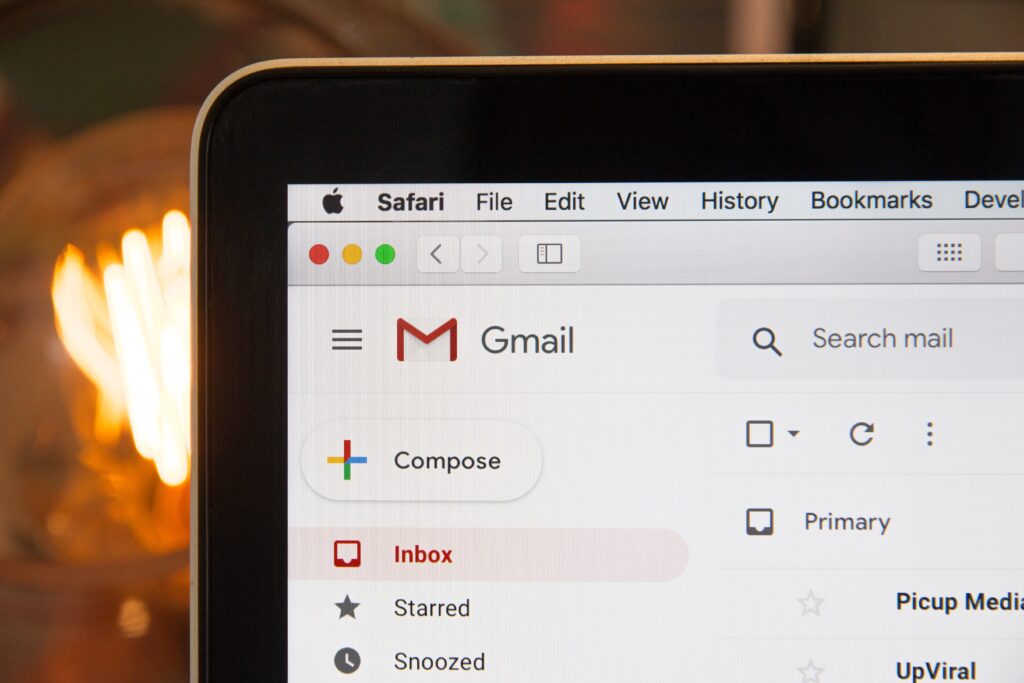Introduction
As a community, we believe that it is not just about sending newsletters or promotional messages; it’s a powerful way to build and maintain relationships with customers, nurture leads, and ultimately drive conversions. We also strongly believe that it’s our responsibility to be trustworthy senders and respect our recipients’ inboxes.
Gmail and Yahoo hold the throne when it comes to email service providers, boasting massive user bases. This means a significant chunk of your target audience likely uses them, making its policies and features crucial to your email marketing success. Now, Gmail and Yahoo are rolling out new spam protections aimed at making inboxes safer and less cluttered.
For Gmail, this will require email validation, easy unsubscription, and they will enforce a Threshold for Spam Rate for senders with more than 5,000 Emails sent to Gmail per day (see details below).
“Last year we started requiring that emails sent to a Gmail address must have some form of authentication. And we’ve seen the number of unauthenticated messages Gmail users receive plummet by 75%, which has helped declutter inboxes while blocking billions of malicious messages with higher precision. Today, we’re introducing new requirements for bulk senders — those who send more than 5,000 messages to Gmail addresses in one day — to keep your inbox even safer and more spam-free.” (Google Blog)
Yahoo is also turning its focus on domain reputation and sender authentication. The updates to Yahoo Mail mean that if your domain has a poor reputation – often due to sending spam or emails which contain phishing-like activity, you will face much more scrutiny. Additionally, the content of an email will be reviewed much more closely, to ensure it doesn’t contain phishing attempts or other scam-related characteristics.
Yahoo’s approach takes a much more holistic view – considering both the reputation of your domain and the quality of the communications that are being sent.
For Mautic users, this is not just another update to gloss over. These changes will affect how your emails are delivered and interacted with, impacting everything from open rates to click-throughs. So let’s dive in and explore what these new rules mean for your Mautic campaigns.
Ask yourself
- Are you familiar with how to handle email deliverability issues, such as spam filtering?
- What is your current strategy for dealing with email service providers’ varying spam rules?
- How crucial is Gmail for your email marketing strategy compared to other service providers?
Gmail and Yahoo’s New Spam Protections
Gmail and Yahoo are introducing new rules for senders that will impact a lot of people using Mautic to send emails (transactional as well as marketing) to Gmail or Yahoo inboxes.
Bulk Senders Requirements
They are cracking down on bulk senders. If you’re sending more than 5,000 messages to Gmail addresses in a single day, you now fall under a special category with new requirements. For Mautic users, especially those with larger campaigns, this is a pivotal update. Ignoring these changes could result in your emails landing in the spam folder, or worse, not getting delivered at all.
Focus on Email Validation
Email validation is no longer optional; it’s a necessity. Gmail and Yahoo have both emphasized that emails sent to their addresses must be authenticated. This helps in filtering out spam and malicious content.
For Mautic instances, it means that implementing and monitoring authentication protocols like SPF, DKIM, and DMARC is imperative. Not doing so could see your emails sidelined, affecting your campaign metrics.
Enable Easy Unsubscription
Gmail and Yahoo are making it easier for users to opt out of emails they no longer want to receive. Bulk senders are now required to include a one-click unsubscribe feature which is compliant with RFC 8058 and RFC 2369. This was included in Mautic 5.0 and there’s also a backport released in Mautic 4.4.11.
Threshold for Spam Rate
Another major update is the introduction of a clear spam rate threshold. Gmail and Yahoo haven’t specified the exact rate, but crossing this line means your emails could be flagged as spam. For Mautic users, this requires constant monitoring of campaign metrics. Falling foul of this rule will not only affect your Gmail and Yahoo recipients but could have broader implications for your entire email marketing strategy ad other mailbox providers are sure to follow this lead.
By adapting to these new rules, Mautic users can ensure that their email campaigns continue to reach inboxes, engage audiences, and drive conversions.
Ask yourself
- How are you currently monitoring your spam rates in your Mautic campaigns?
- Do your existing Mautic email templates include a one-click unsubscribe feature?
- Are you familiar with email authentication protocols like SPF, DKIM, and DMARC, and have you implemented them in your Mautic settings?
Actionable Steps for Mautic Users
There are some essential and recommended actions you can and should take to ensure email deliverability stays high for you when sending to Gmail and Yahoo.
Setting Up Main Email Authentication Protocols for Mautic Users
Email authentication is non-negotiable, especially with Gmail ramping up its spam protection features. Let’s dive into the big three: SPF, DKIM, and DMARC, and see how you can set them up for better email deliverability.
SPF (Sender Policy Framework)
- Identify Your Sending Domain: Your SPF record will be a TXT record in your domain’s DNS settings. So start by logging into your DNS provider’s dashboard.
- Create or Edit TXT Record: Add a new TXT record or edit an existing one to include your mail server’s details. A basic SPF record might look like v=spf1 a mx include:yourserver.com ~all.
- Test: Use SPF validation tools to verify the record’s accuracy.
DKIM (DomainKeys Identified Mail)
- Generate a Pair of Keys: You’ll need a public and a private key. Your public key will go into your DNS, and the private key stays in your mail server (Mautic in this case).
- Update DNS Record: Add a TXT record for the DKIM key, it usually looks like k=rsa; p=YourPublicKeyHere.
- Activate and Test: Once added, turn on the DKIM signing in your mail server and test the setup using DKIM validation tools.
DMARC (Domain-based Message Authentication, Reporting & Conformance)
- Start Small: Create a TXT record in your DNS settings for DMARC, start with a ‘none’ policy to collect data first, like v=DMARC1; p=none; rua=mailto:[email protected].
- Review Reports: DMARC will send XML reports to the specified email. Review these for issues.
- Tighten Policy: Once confident, you can change the policy from ‘none‘ to ‘quarantine‘ or ‘reject‘ for stricter controls.
Final Thoughts
Regularly check the setup using different validation tools. And be ready to tweak settings as email providers update their algorithms.
Ask yourself
- Have you set up these authentication protocols for your Mautic email campaigns?
- How often do you verify the status of your SPF, DKIM, and DMARC records?
- Have you noticed any changes in your email deliverability after implementing these protocols?
Implementing Easy Unsubscription
Mautic gives you the flexibility to customize your email templates, so make use of it. Head over to the “Emails” tab, and within your templates, ensure that you include an unsubscribe link that’s easily visible. Ideally this should be connected with a Preference Centre in Mautic, which allows the user to set their preferences or completely unsubscribe.
Mautic automatically takes care of the one-click unsubscribe if you’re on the latest version.
Monitoring for Spam Rates: Leverage External Tools
While Mautic offers robust analytics, it’s prudent to expand your monitoring arsenal with external tools specifically designed to gauge your sending reputation. Remember, different mailbox providers have different ways to evaluate your email reputation. It’s not only Gmail.
Utilize these third-party tools to get a multi-faceted view.
Here are some vital tools you could consider integrating to get a more holistic understanding of your email performance:
- Sender Score by Validity: Think of this as your email credit score. A higher score generally indicates better email deliverability. This tool uses a rolling 30-day average to gauge where your IP address ranks among others.
- Barracuda Central: This tool offers real-time IP and domain reputation lookups. Use it to check whether your emails are being flagged as spam or passing the legitimate test.
- Customer URL Ticketing System by McAfee: This system allows you to dig deep into various data points such as domain history, associations, DNS, and mail server reputation.
- Google’s Postmaster Tools: If you’re sending a high volume of emails to Gmail users, this tool will provide insights into your IP and domain reputation, as well as any specific delivery errors you need to be aware of. Use this if you’re sending a lot to Gmail.
- Microsoft SNDS: Much like Google’s Postmaster Tools, SNDS provides data on your spam complaint rate and IP sending reputation when sending emails to Microsoft’s email platforms. If you’re sending it to Microsoft, use it.
Using these tools in combination can give you a more nuanced understanding of your email reputation. If Gmail or Microsoft flags your emails, it’s likely other providers will too. So stay vigilant, and keep an eye on these metrics to remain in Gmail’s good graces.
Ask yourself
- Are you currently using any third-party tools to monitor your email-sending reputation?
- How often do you check these external tools for insights into your email deliverability?
- Have you noticed any correlation between the metrics from these third-party tools and Mautic’s own analytics?
Don’t let these changes catch you off guard. Adapt, optimize, and keep your Mautic campaigns running smoothly.
Conclusions
Alright, let’s wrap this up. Email marketing is a cornerstone for businesses, and Gmail and Yahoo are too big a proportion of email users to ignore. Gmail and Yahoo’s updated spam protection mechanisms are levelling up the email game, demanding higher standards for authentication, validation, and user experience.
If you’re using Mautic, you need to get your house in order — fast.
The clock is ticking. Adapt your Mautic templates and implement the latest best practices in email authentication, like SPF, DKIM, and DMARC. Fine-tune your settings to align with Gmail and Yahoo’s expectations, and keep an eye on your spam rates. Numerous tools are out there to help you gauge your sender reputation, and use them to your advantage.
Don’t sleep on this. Make sure you’re ahead of the game. Stay compliant, stay in the inbox.
Ask yourself
- What specific steps will you take immediately to align your Mautic settings with Gmail’s new spam protections?
- How will you monitor the impact of these changes on your email deliverability and overall campaign performance?
- Do you have a plan for continuous improvement and adaptation as email providers continue to evolve their algorithms and user protections?
- Have you verified your DNS settings after setting up email authentication protocols?



